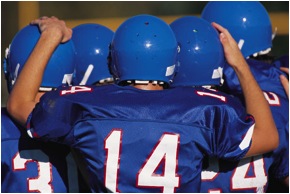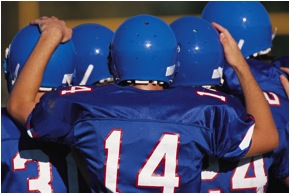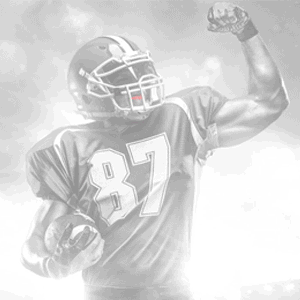Preseason Training: A 5-Step Guide To Keeping Your Players Healthy

 From NFL training camps to high school hell weeks, preseason training is a time of preparation for the physical and mental stresses of the upcoming season — both for players and coaches alike. As a coach, one of those particular stresses is unfortunately difficult to avoid: injuries.
From NFL training camps to high school hell weeks, preseason training is a time of preparation for the physical and mental stresses of the upcoming season — both for players and coaches alike. As a coach, one of those particular stresses is unfortunately difficult to avoid: injuries.
Players are going to get hurt, it’s just a fact; and injuries are especially prevalent during periods of intense player training. When athletes are getting readjusted to live action and contact after several months of being off, they are much more susceptible to getting hurt.
Here are five simple steps to help keep your team on the field through the preseason and better prepared for the grind ahead:
Step One: Make Your Waterboy The MVP
Every year around this time, you read articles or hear stories about athletes struggling with dehydration. Whether it’s due to excessive heat or over-extending themselves, athletes need to constantly stay hydrated — particularly during preseason training.
Training camp is where players want to make an impression in order to ensure their spot on the team, and athletes at every level tend to push their bodies beyond their limits. Don’t let your players wait until it’s too late. Make sure your team gets plenty of water breaks, so that all players must stop and get water.
Step Two: Set The Pace
While some athletes may train throughout the offseason, not all of your players are taking that initiative. Without seeing live game action during the off months, they may not be at full tilt from the first whistle of the first practice. When your players aren’t game ready, they are vulnerable to injuries.
Allow your players to build up to the physicality of the season. This is especially true when it comes to contact drills and situations. Giving your team time to ramp up the hitting or tackling could avoid many unnecessary injuries.
Step Three: Back To Basics
While you’d ideally prefer to use preseason training as a way to build upon last season, an important part of player safety is reinforcing the basics. A lack of fundamentals or confusion during drills is a recipe for preventable injuries.
Give your athletes — particularly new players and rookies — time to adjust to your team’s system and learn to play at a new level.
Step Four: Stock Up
Preseason is the time of year when trainer’s tables are occupied the most and players are typically the sorest. It’s important to make sure your facilities are properly prepared.
With a high volume of athletes and a plethora of different bumps, bruises, aches and pains coming through the training room doors, stock up on training equipment and have adequate staffing at all times.
Step Five: Equipment Check
Of course, the most important way to protect players is with sports equipment that fits properly, as ill-fitting gear opens athletes up to easily avoided injuries.
With the right athletic protection and a personalized fit, your players stay focused on the field, not their equipment.
Want to protect your players, while staying focused on preparing for the season? Gladiator’s Protection ProgramTM streamlines the ordering process and eases your administrative burden with your personal Program Coordinator.






